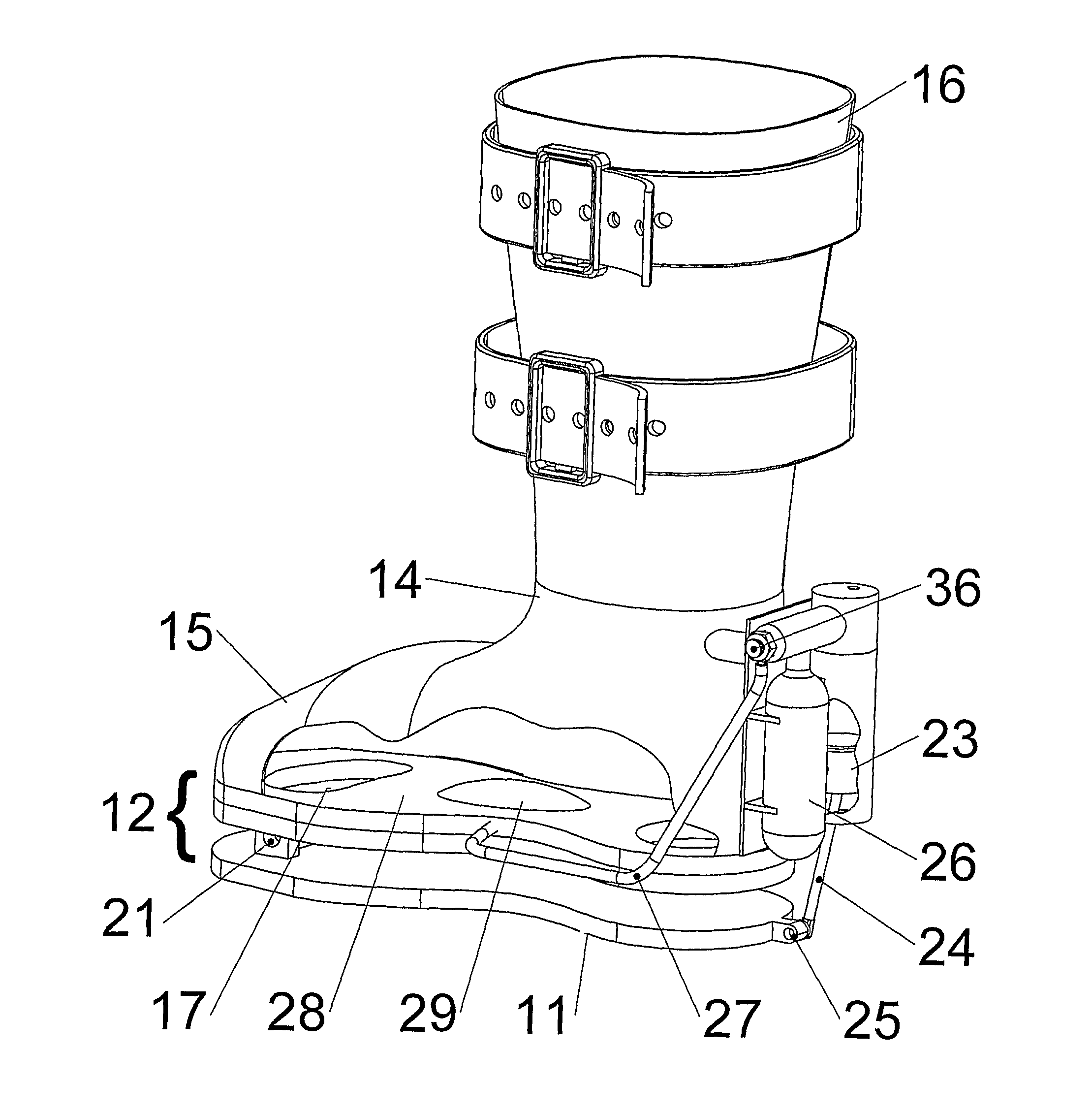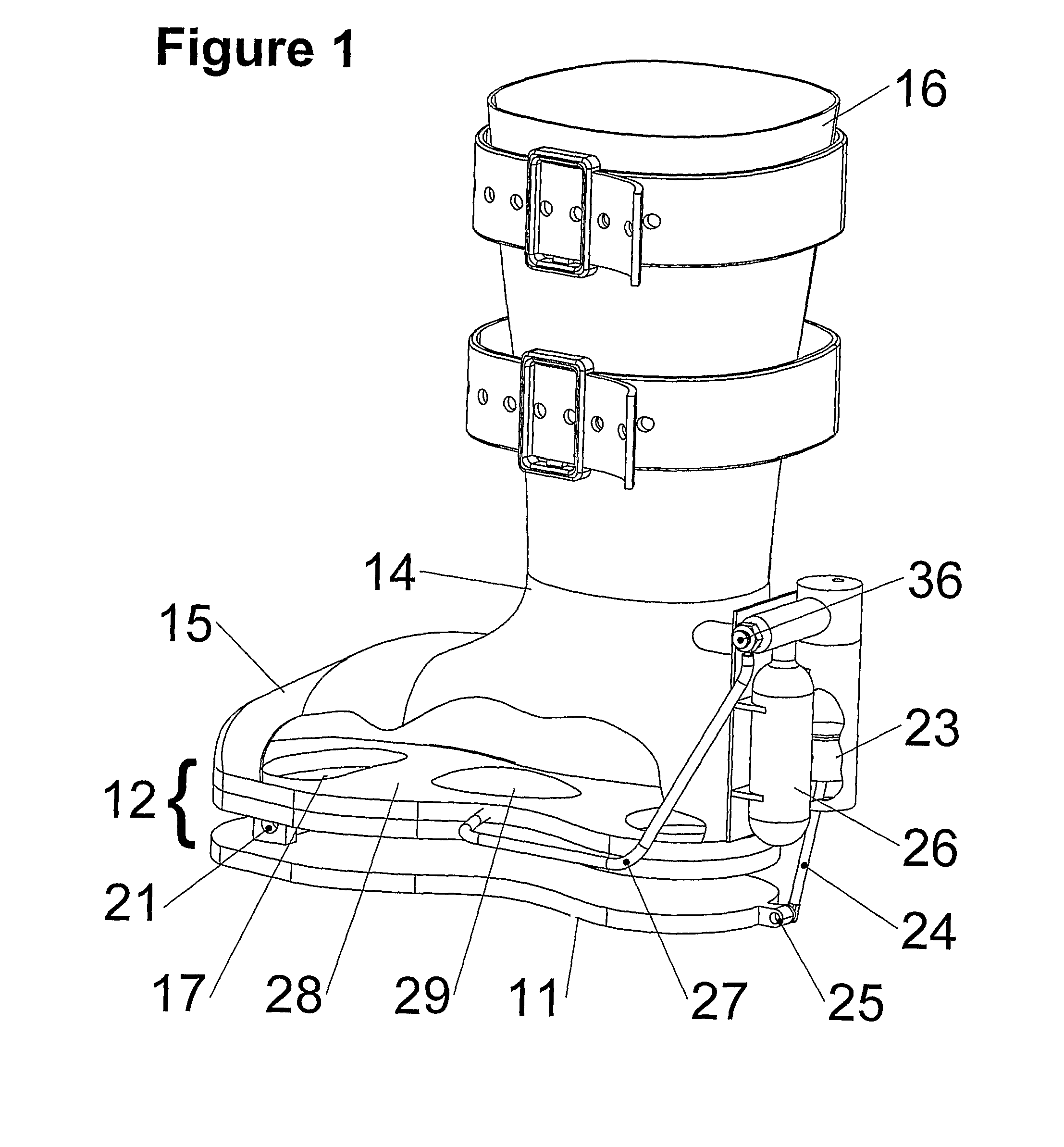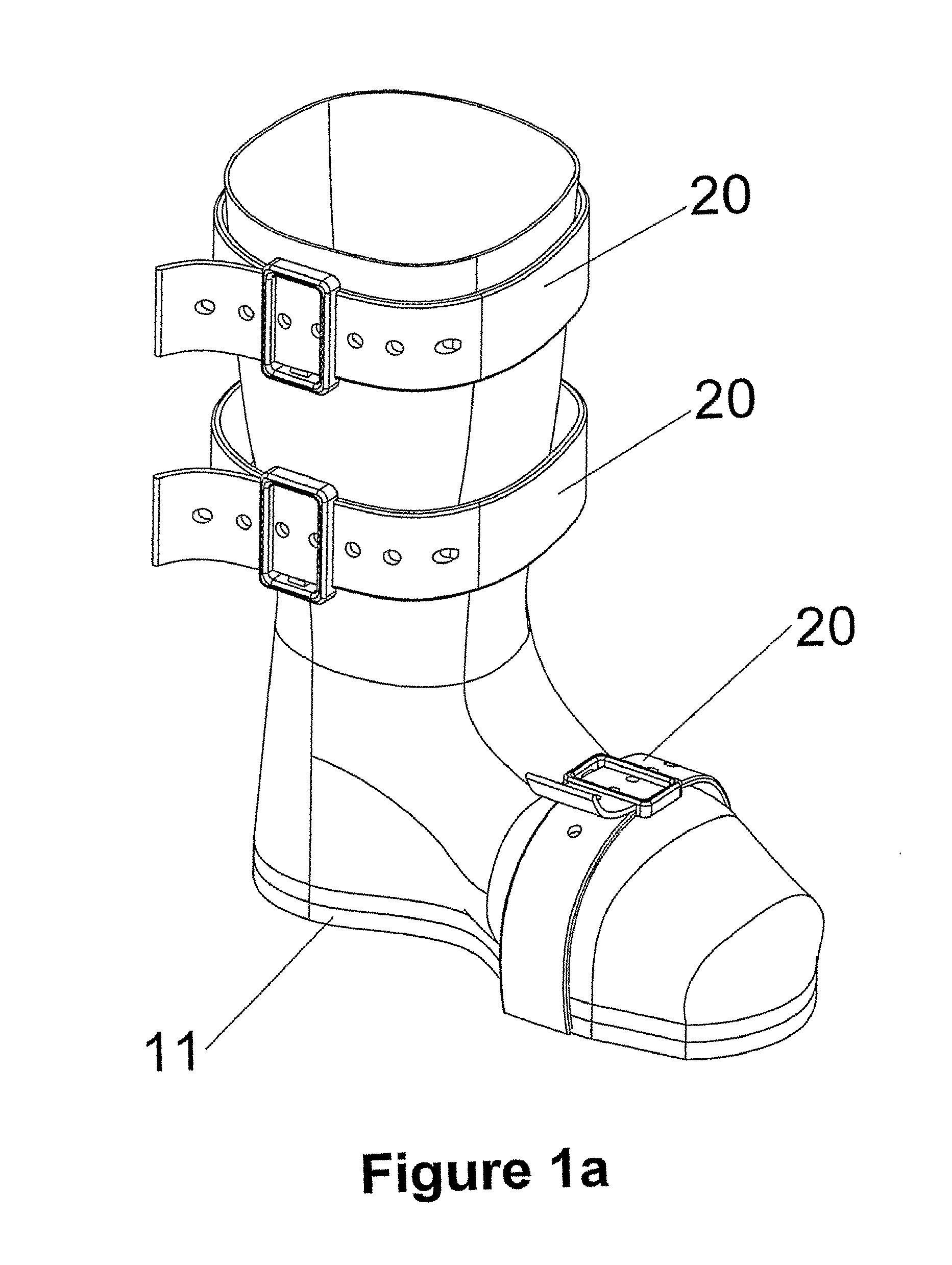Improvements in or relating to footwear
- Summary
- Abstract
- Description
- Claims
- Application Information
AI Technical Summary
Benefits of technology
Problems solved by technology
Method used
Image
Examples
first embodiment
[0036]Referring now to FIG. 1, there is shown the present invention, where there is shown a boot having a sole 12, upper 14 comprising a lower section 15 operable to cover the toes and metatarsals and an upper section 16 operable to encircle a lower leg portion (not shown) of the wearer of the boot. This particular embodiment is arranged for the support of a foot which is subject to an ulcer or similar lesion on the underside of the foot: the inner sole 28 of the boot is arranged to reduce load on the sole portion subject to ulcer or lesion. The areas of the foot most prone to the ulcers are the heel and main pad of the foot. Conveniently, this is enabled by shaping the inner sole, by means of a sharp knife or small saw, whereby to produce apertures 17 within the inner sole. Additionally, the uppermost portion of the upper provides support to the leg whereby to reduce loading upon the sole of the foot. Straps, not referenced, are fastened tightly about the calf, whereby to support t...
second embodiment
[0040]FIG. 2 shows a second embodiment wherein there is provided a bellows-type sole 28 operable to be compressed in use, whereby to urge air under pressure into pressure storage unit 26, whereby to provide a source of compressed air. It will be appreciated that as a sole unit, the exact placement of the bladder is not of particular concern, since that can be provided within or associated with an inner sole, not shown. Conveniently, the upper surface 29 of this bellows sole 28 is manufactured of a rigid plastics material and has a port with which an input tube of a bladder element can locate—possibly being of a similar nature to the material of an under-sole portion, with the bellows side elements being initially formed of a further, more resilient types of plastic material. Conveniently, the sole portion 28 is manufactured in a two stage plastics manufacturing process, whereby to enable the upper, lower and bellows elements of the sole 27 to be simply and reliably manufactured. Ind...
PUM
 Login to View More
Login to View More Abstract
Description
Claims
Application Information
 Login to View More
Login to View More - R&D
- Intellectual Property
- Life Sciences
- Materials
- Tech Scout
- Unparalleled Data Quality
- Higher Quality Content
- 60% Fewer Hallucinations
Browse by: Latest US Patents, China's latest patents, Technical Efficacy Thesaurus, Application Domain, Technology Topic, Popular Technical Reports.
© 2025 PatSnap. All rights reserved.Legal|Privacy policy|Modern Slavery Act Transparency Statement|Sitemap|About US| Contact US: help@patsnap.com



